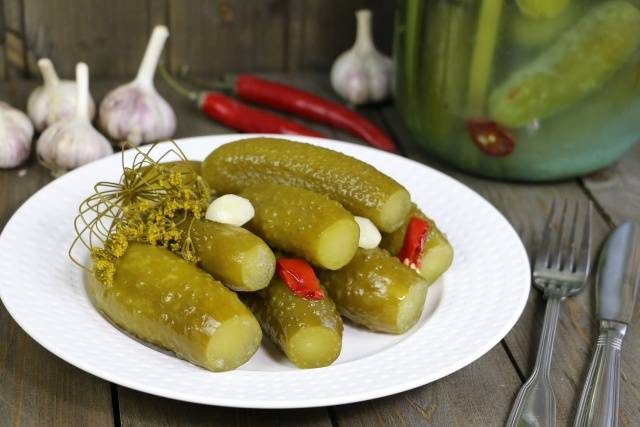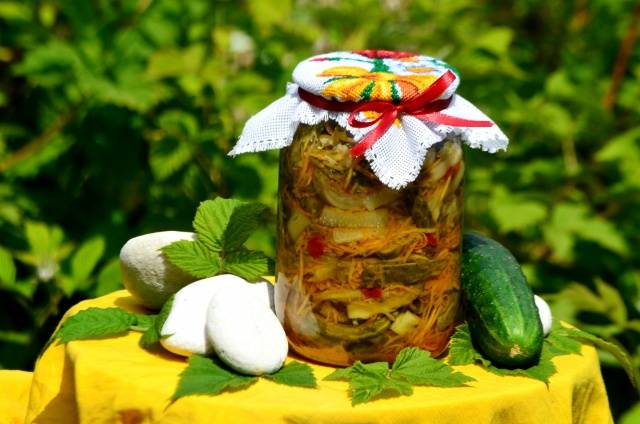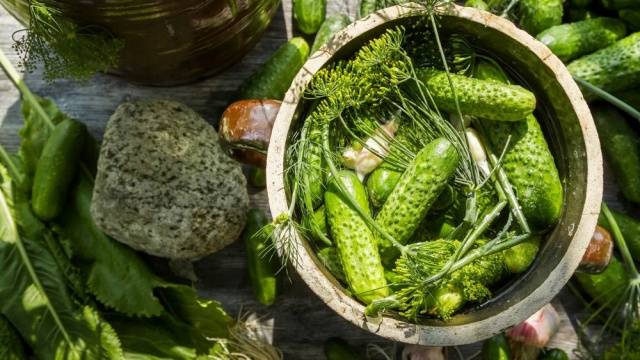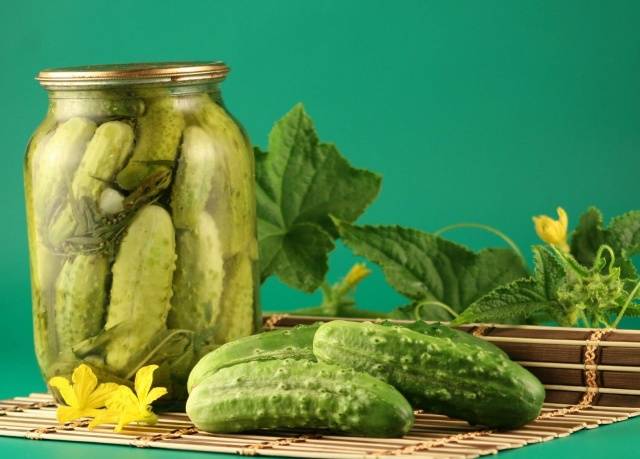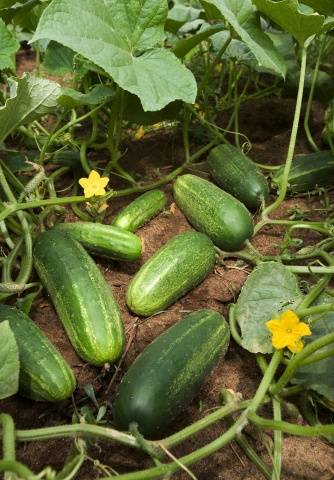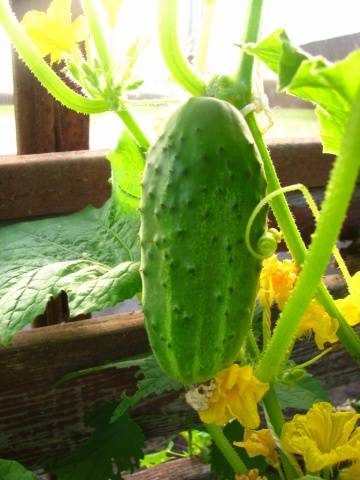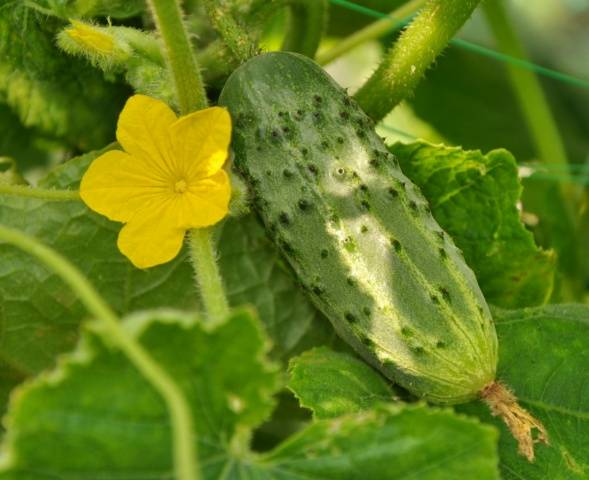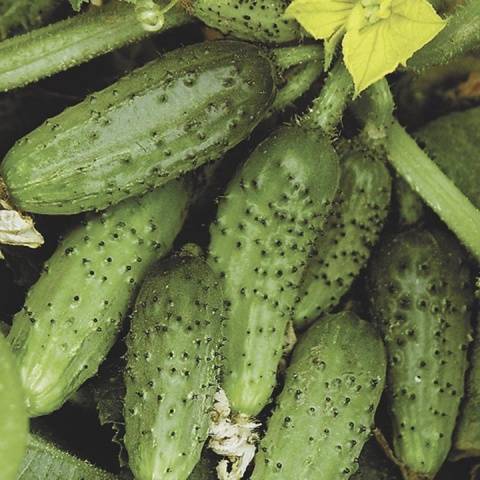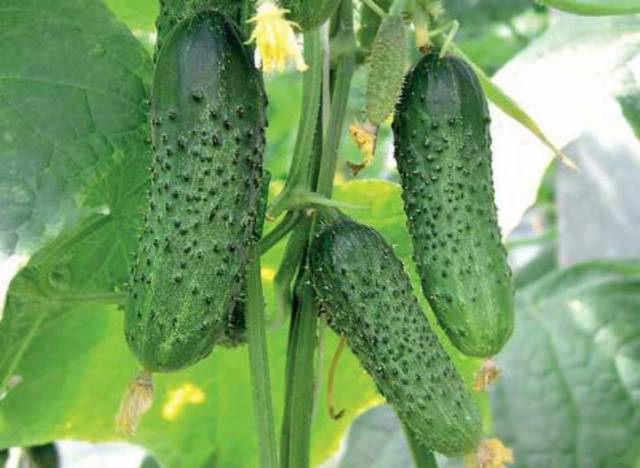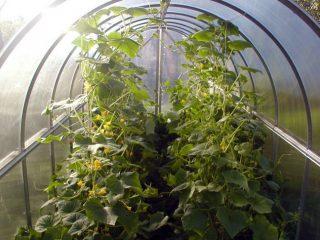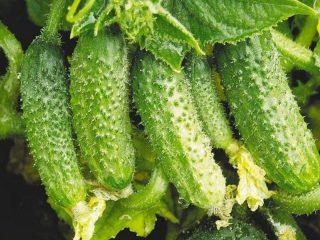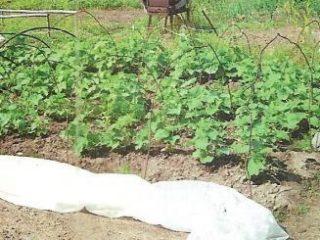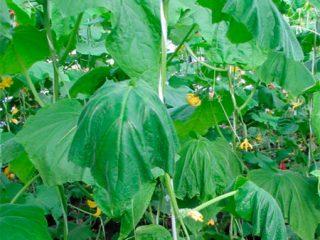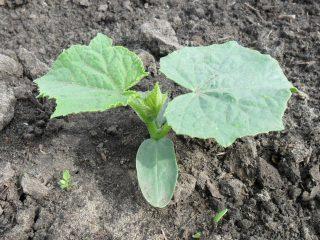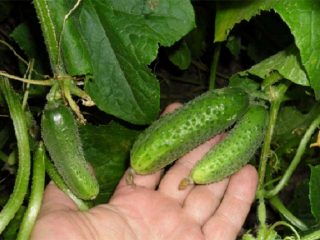Content
Only experienced gardeners know that not all varieties of cucumbers are suitable for canning. It turns out that in order to get tasty and crispy pickles, it is not enough to know the “magic” marinade recipe. Much, of course, depends on the brine, but not everything. No less important factors are: the variety of cucumber and the technology for its cultivation. So, what varieties of cucumbers should you still use for pickling and preservation, and how to properly care for such plants?
Varieties of cucumbers by pollination method
Cucumbers are not such a simple vegetable as it might seem at first glance. There are a lot of nuances and subtleties that you need to know when going to buy seeds. For example, not everyone knows that some cucumbers need bees for pollination, others do without pollen transfer at all, since they are hermaphrodites (male and female characteristics in one flower). And there are even self-pollinating cucumbers, which themselves do an excellent job of transferring pollen.
The question of the method of pollination is also quite important when choosing a variety for conservation. After all, according to gardeners, there is no tastier cucumber than a bee-pollinated one. The natural process of pollination is complemented by planting such varieties mainly in open ground - this “natural” combination provides cucumbers with a strongly pronounced taste and smell. So, the first rule for choosing a pickling variety is that the cucumber must be bee-pollinated.
What is written on the package
A packet of seeds is a treasure trove of useful information. There is not much text, when buying seeds, it is better to read it to the last letter. Each package of seeds has one of the following marks:
- cucumber for salads;
- the variety is suitable for pickling and preservation;
- universal hybrid.
Salad cucumber has thin and delicate skin. It can be easily identified by its elongated shape and glossy surface. There are no tubercles or thorns on the salad cucumber. It is very tasty fresh (in salad or okroshka), but not at all suitable for preservation.
It's all about the thin skin and loose pulp. Eating it straight from the garden is a pleasure - the cucumber is crispy and juicy. But, if you place a cucumber for salad in a jar of brine (especially hot), it will wrinkle, lose color, turning into a brown “something”. If you open such a jar in winter, you won’t be able to enjoy the crunchy vegetable; the cucumbers will become soft and crumbly.
It’s a completely different matter when the packaging with seeds says “for preservation.” These cucumbers are designed for pickling and marinade.
Distinctive features of pickled cucumber
The best varieties of cucumbers for pickling and canning are those adapted to local climatic conditions.Only with the proper temperature, humidity, fertilized, loose soil can you grow delicious cucumbers.
Pickling varieties can be easily distinguished by the appearance of the fruit - this cucumber has a rich green tint. And most importantly, the skin of the greens is dense with tubercles and pimples decorated with thorns.
The pickling qualities of cucumbers largely depend on the thorn. There are three types of spikes:
- white;
- brown;
- black.
The black color of the needles indicates that the cucumber has released all its excess moisture into the atmosphere. This means that the flesh of the fruit is elastic and dense. This is the kind of cucumber that will perform best after pickling.
Universal varieties are tasty both fresh and salted. Therefore, they can also be chosen for preparations for the winter.
Rules for caring for and collecting cucumbers for preservation
In order to better understand what cucumbers intended for preservation need, you need to understand their structure. Cucumber cells divide only until the moment when greenery appears. After this, the cells do not multiply, but grow together with the cucumber.
The more the cell stretches, the more juicy and loose the pulp will be in a mature vegetable (this is exactly the structure observed in salad cucumbers). A pickling varieties are distinguished by the density and elasticity of the pulp, these also include small hybrids - gherkins and pickles.
Before collecting cucumbers for preservation, they need to be thoroughly watered with warm water (these vegetables generally do not like cold water). It is better to do this in the evening, and in the morning, before the sun warms up, the cucumbers are collected.
You need to pick cucumbers very carefully; the vines should not be turned over and injured, otherwise the plant may become infected.
Choosing the best variety
Having assessed all the factors and your own capabilities, you can buy cucumber seeds for pickling. The general requirements for such varieties look like this:
- The packaging of the seeds must bear the designation “for pickling, preservation” or “universal cucumbers”.
- It is better to give preference to bee-pollinated varieties and hybrids; they retain the taste more fully.
- For preservation, it is recommended to use medium and late varieties grown in open ground. Early greenhouse cucumbers are preferable for salads.
- The size of the cucumber should be small or medium – 6-15 cm.
- Cucumbers for preservation you need to choose the correct cylindrical shape, so it’s more convenient to put them in jars.
- The peel of the greens should be dense without damage, have black thorns and large pimples.
- It’s better to cut the cucumber and see what’s inside. There should be no empty spaces; seeds inside pickling cucumbers are welcome, but in small quantities.
- For preservation you need tasty, crispy cucumbers without bitterness.
Based on the above, the variety is selected.
"Nezhinsky"
One of the most famous, and oldest, varieties for pickling is “Nezhinsky”.This is a mid-season bee-pollinated cucumber for open ground. The first cucumbers in the southern regions appear on the 50th day after planting; in northern latitudes you will have to wait even longer for the harvest - up to 60 days.
But cucumbers of the “Nezhinsky” variety satisfy all the requirements for pickling greens: they are small (11 cm), elastic and crispy, with a dense, lumpy skin and black spines.
The fruits have absolutely no bitterness and retain their taste and “crunchiness” perfectly after pickling or marinade.
This variety is a tall one - the vines of the Nezhinsky cucumber need to be tied to a trellis.
"Muromsky"
The variety belongs to the super-early variety, however, this does not in any way affect its pickling qualities. Ripe cucumbers appear 35 days after planting the seeds in the ground. Zelentsy are small - 6-8 cm, their shape is elliptical. The skin of the fruit is dark green with white veins.
The variety is resistant to low temperatures. The fruits are crispy, without voids, with a pronounced taste and aroma.
An important nuance of the “Muromsky” variety is the rapid overripening of cucumbers. The harvest must be harvested daily, otherwise the fruits will turn yellow and harden.
"Voronezh"
One of the most productive varieties of pickling cucumbers is “Voronezhsky”. Cucumbers grow 50 days after sowing the seeds.
The fruits are smooth, cylindrical in shape with small ribs. The average weight of greens is 100 grams. The peel of these cucumbers is dark green with small pimples and thorns. Bushes of the Voronezh variety are medium in size, with large and thick leaves. The plant tolerates drought and short-term cold weather well.
"Bush"
One of the representatives of universal cucumbers (suitable for both salad and pickling) is the “Bush” variety. Cucumbers grow in small bushes, densely hung with fruits.The variety is mid-season - the first greens appear on the 48th day.
The cucumbers themselves are dark green, oblong in shape, with numerous black spines. The size of greens is small – up to 10 cm. The advantage of the “Bush” variety is the good “keeping quality” of the fruit. Cucumbers retain their presentation for a long time and remain juicy and crispy.
The variety is very resistant to various diseases, unpretentious in care, tolerates cold weather well, and has a high yield.
"Springhead F1"
Not only varietal cucumbers are good for pickling; there are a lot of hybrids suitable for this. One of the best is “Rodnichok F1”. It belongs to the mid-season variety - it bears fruit on the 50th day after planting. Productivity is high, disease resistance is excellent.
The cucumbers are fragrant and crispy. The average size of greens is 12 cm, and their weight is about 100 grams. The pulp is elastic and without voids, and the taste is rich, without bitterness.
Conclusions and results
It cannot be said unequivocally that certain types and varieties of cucumbers are more suitable for pickling. Both among hybrids and greenhouse varieties there are many vegetables that lend themselves well to preservation. The main rule is to read what is written on the package of seeds. If the inscription says that the variety is universal or cucumber varieties for pickling and canning, you can safely take such seeds.
